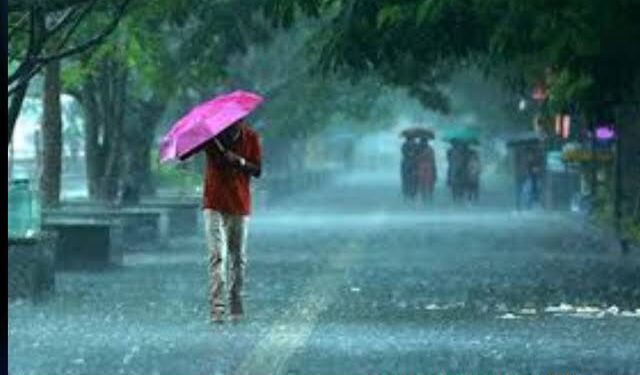A low-pressure system, currently active near Jharkhand, is set to bring heavy to very heavy rainfall across Odisha until July 4, according to the Regional Meteorological Centre in Bhubaneswar.
The system, moving northwest, is expected to cross Jharkhand within the next 24 hours, intensifying monsoon activity in the state. Coupled with an upper-air cyclonic circulation, this weather event has prompted the issuance of orange and yellow warnings for several districts.
Over the past 24 hours, districts like Sundargarh, Sambalpur, and Jharsuguda recorded extremely heavy rainfall, while Bargarh, Dhenkanal, Sonepur, Boudh, Angul, Keonjhar, Deogarh, Kalahandi, Nabarangpur, Koraput, Malkangiri, Mayurbhanj, Balangir, and Nuapada experienced heavy downpours. The India Meteorological Department (IMD) has forecasted continued intense rainfall, with an orange warning for Mayurbhanj, Keonjhar, and Jharsuguda on Wednesday, indicating very heavy rain. A yellow warning for heavy rain has been issued for Deogarh, Sambalpur, Angul, Dhenkanal, and Bargarh.
The southwest monsoon, currently active over Odisha, has contributed to 262 mm of rainfall across the state from June 1 to July 1, which is 21% above the normal average of 216.5 mm. Districts like Jagatsinghpur, Boudh, Mayurbhanj, Deogarh, and Sundargarh have seen significantly high rainfall, while Gajapati, Nuapada, and Jharsuguda reported deficient rainfall. Other districts, including Cuttack, Dhenkanal, Kendrapara, Keonjhar, Balasore, Sonepur, Koraput, and Sambalpur, recorded above-normal rainfall, with the remaining areas experiencing normal precipitation.
Manorama Mohanty, Director of the Regional Meteorological Centre, stated that the ongoing influence of the low-pressure system and cyclonic circulation will sustain heavy rainfall through the first week of July, potentially exceeding normal levels. Authorities have been advised to remain vigilant and prepare for potential disruptions caused by the continuous downpours.
Residents are urged to stay updated on weather alerts and take necessary precautions, especially in districts under orange and yellow warnings, to mitigate risks associated with flooding and waterlogging.





























